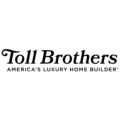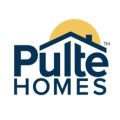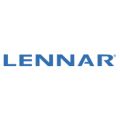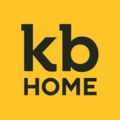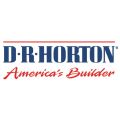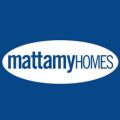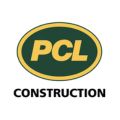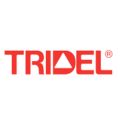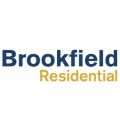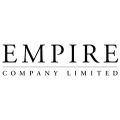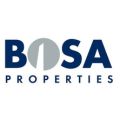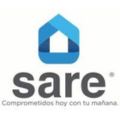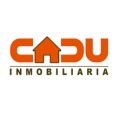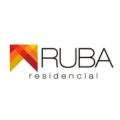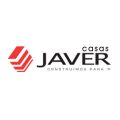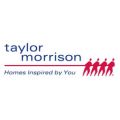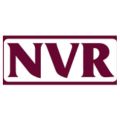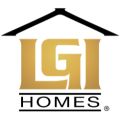
Index
Applications & Benefits of GAO’s RFID, BLE, IoT & Drones for Residential Building Construction
GAO’s Assists Clients with Standards, Mandates & Regulations of Residential Building Construction
GAO Software Provides Easy Integration with API
Case Studies of RFID, IoT & Drone Applications
GAO RFID Systems & Hardware for Residential Building Construction
GAO Makes Efforts to Satisfy Customers
GAO Has Served Residential Building Construction Extensively
Overview
The Residential Building Construction industry involves designing and constructing houses for people to live in. It includes planning, permits, preparing the site, building the foundation and structure, installing systems, adding finishes, and conducting inspections. The industry is influenced by economic factors and trends, and it provides essential housing options for communities.
GAO’s RFID, BLE, IoT, and drone technologies have helped its customers in Residential Building Construction Industry to improve their work processes, their operations and productivity by better management of their staff, materials and operational equipment such as Excavators Bulldozers, Graders, Backhoes, Loaders, Skid-steer loaders Concrete mixers, Concrete Pumps, Rebar benders and Cutters, Formwork systems, Circular saws, Nail guns, Power drills, Screw guns, Air compressors, Scaffolding and ladders, Power sanders, Paint sprayers, Tile cutters, Flooring Nailers, Drywall lifts, Wallpaper steamers.
Ranked as a top 10 global RFID supplier and based in New York City and Toronto, GAO RFID Inc offers a wide choice of RFID (radio frequency identification) readers and tags at ultra high frequency (UHF), high frequency (HF, including NFC) and low frequency (LF), BLE (Low Energy Bluetooth) gateways and beacons, and various RFID and BLE systems such as people tracking, asset tracking, access control, parking control, fleet management, WIP (work in progress), traceability. Such RFID and BLE products and systems, together with its IoT and drone technologies, have been widely used in Residential Building Construction industry. Its sister company, GAO Tek Inc. https://gaotek.com, is a leading supplier of industrial or commercial testers and analyzers, drones, and network products.
The targeted markets of both GAO RFID Inc. and GAO Tek Inc. are North America, particularly the U.S., Canada, Mexico, and Europe. As a result, this website gaorfid.com is offered in English and other major languages of North America and Europe such as Spanish, French, German, Italian, Polish, Ukrainian, Romanian, Russian, Dutch, Turkish, Greek, Hungarian, Swedish, Czech, Portuguese, Serbian, Bulgarian, Croatian, Danish, Finnish, Norwegian, Slovak, Catalan, Lithuanian, Bosnian, Galician, Slovene, Latvian, Estonian, Welsh, Icelandic, and Irish.
Applications & Benefits of GAO’s RFID, BLE, IoT & Drones for Residential Building Construction

To satisfy its customers, GAO’s RFID or RFID Systems for Residential Building Construction are offered in 2 versions. One version is that its software is running on a local server that normally is on our client’s premise, and another version runs in the cloud. The cloud server could be GAO’s cloud server, client’s own cloud server or a cloud server from one of the leading cloud server providers such as Amazon Web Services (AWS), Microsoft Azure, Google Cloud, IBM Cloud (formerly SoftLayer), Oracle Cloud, RedHat, Heroku, Digital Ocean, CloudFlare, Linode and Rackspace. The above illustrates GAO system for Residential Building Construction with its software running on a local server.

The above illustrates GAO system for Residential Building Construction with its software running in cloud.
GAO’s RFID and BLE technologies, consisting of RFID readers, RFID tags, BLE gateways, BLE beacons, software, cloud services and their systems, have the following applications in Residential Building Construction industry:
- Asset Tracking and Management: RFID tags help track construction equipment, tools, and materials, improving overall asset management and reducing loss.
- Inventory Management: RFID tags monitor and manage inventory levels of construction materials, preventing shortages or overstocking.
- Personnel Tracking: RFID badges track worker movements, enhancing safety, security, and work progress monitoring.
- Access Control: RFID controls access to restricted areas, allowing authorized personnel with appropriate tags, thus enhancing site security.
- Tool and Equipment Tracking: RFID tags on tools and equipment monitor usage and location, preventing loss and optimizing resource allocation.
- Worksite Safety: RFID-enabled safety equipment monitors worker movements and ensures proper gear usage for enhanced safety compliance.
- Automated Time and Attendance Tracking: RFID badges automate worker time and attendance records, streamlining payroll processes.
- Material Authentication and Quality Control: RFID tags authenticate material origin and quality, preventing use of substandard materials.
- Prefabricated Component Management: RFID tags track prefabricated components, ensuring proper assembly and construction scheduling.
- Maintenance and Warranty Information: RFID tags store maintenance and warranty details, aiding property management.
- Progress Tracking: RFID monitors construction phase progress, integrating with project management for better planning.
- Energy Management: RFID in energy-efficient buildings controls systems based on occupancy patterns, optimizing energy usage.
- Waste Management: RFID tracks waste containers, aiding waste collection schedules and promoting recycling.
- Document Management: RFID tags on documents ease retrieval and tracking of construction plans and blueprints.
- Security and Surveillance: RFID tracks people and vehicles, enhancing security by preventing unauthorized access and theft.
GAO’s drone technologies find the following applications in the Residential Building Construction industry:
- Site Surveying and Mapping: Drones equipped with high-resolution cameras and Lidar sensors can quickly and accurately survey construction sites, capturing detailed topographical data. This information aids in site planning, design, and assessing potential challenges.
- Progress Monitoring: Drones can capture regular aerial images or videos of construction sites, allowing project managers to monitor progress and compare actual work against project timelines. This aids in keeping projects on schedule.
- 3D Modeling: Drone-captured data can be used to generate accurate 3D models of construction sites and buildings. These models facilitate visualization, design validation, and decision-making throughout the construction process.
- Site Planning and Design: Drones help architects, engineers, and planners visualize the site’s surroundings and incorporate accurate terrain data into their designs, ensuring better integration with the environment.
- Safety Inspections: Drones can access hard-to-reach or potentially hazardous areas, reducing the need for personnel to work at heights or in dangerous locations. They can inspect structures, roofs, and other elevated components for safety compliance.
- Quality Control: Drones can capture high-resolution imagery for detailed inspections, identifying defects, deviations from plans, and other quality-related issues during construction.
- Stockpile Volume Calculation: Drones equipped with software can calculate the volume of stockpiled materials on construction sites, assisting in inventory management and optimizing material usage.
- Construction Documentation: Aerial images and videos captured by drones serve as visual documentation of the entire construction process. These records can be useful for project reporting, legal matters, and dispute resolution.
- Marketing and Presentations: Aerial imagery and videos captured by drones can be used for marketing purposes, showcasing projects to potential clients, investors, and buyers in an engaging and visually appealing manner.
- Logistics and Supply Chain: Drones can be employed to transport small items or documents between different parts of the construction site, enhancing logistical efficiency.
- Environmental Monitoring: Drones can monitor environmental conditions around construction sites, helping to ensure compliance with environmental regulations and minimizing the impact on the surroundings.
- Communication and Collaboration: Aerial imagery captured by drones can be shared with stakeholders, enabling better communication, collaboration, and informed decision-making among project teams.
- Thermal Inspections: Drones equipped with thermal cameras can identify heat leaks, insulation issues, and HVAC inefficiencies, contributing to energy-efficient building practices.
- As-Built Documentation: Drones can capture accurate as-built data at the end of construction, facilitating smooth handover processes and future maintenance.
- Emergency Response and Disaster Assessment: In case of accidents or disasters, drones can quickly assess the situation, helping first responders and authorities make informed decisions.
GAO’s IoT technologies, consisting of IoT sensors, sensors networks and systems, find the following applications in the Residential Building Construction industry:
- Smart Building Management: IoT-enabled systems manage lighting, HVAC, and energy consumption for optimal efficiency and occupant comfort.
- Energy Monitoring and Management: IoT devices track energy usage, identify patterns, and optimize consumption to reduce costs and environmental impact.
- Home Automation: IoT integrates appliances, lighting, thermostats, and security systems for remote control and scheduling.
- Smart Security Systems: IoT cameras, motion sensors, and access control provide real-time security monitoring and alerts for homeowners.
- Predictive Maintenance: IoT sensors monitor equipment health, predicting maintenance needs and preventing costly breakdowns.
- Construction Equipment Tracking: IoT tracks location, usage, and maintenance of construction equipment to optimize resource allocation.
- Environmental Monitoring: IoT sensors monitor air quality, humidity, and temperature, ensuring a healthy indoor environment.
- Water Management: IoT devices monitor water usage, detect leaks, and enable remote shut-off, conserving water and preventing damage.
- Waste Management: IoT sensors optimize waste collection schedules, reducing costs and promoting recycling efforts.
- Occupancy Sensing: IoT detects occupancy in rooms, adjusting lighting and HVAC systems for energy efficiency.
GAO’s Assists Clients with Standards, Mandates & Regulations of Residential Building Construction
GAO RFID Inc. has developed its products and systems in compliance with industry standards and mandates. GAO has assisted our customers in Residential Building Construction to deploy RFID, BLE, IoT and drone systems and to ensure such deployments complying with applicable industry standards, U.S. government regulations and Canadian government regulations such as:
RFID, BLE, IoT & Drones Standards & Mandates
- ISO 18000-6C (EPC Gen2)
- ISO 15693
- ISO 14443
- ISO 21481 (DASH7)
- ISO 24730
- EPCIS (Electronic Product Code Information Services)
- BIM (Building Information Modeling) Integration
- MQTT (Message Queuing Telemetry Transport)
- CoAP (Constrained Application Protocol)
- Zigbee
- Z-Wave
- Bluetooth LE (Low Energy):
- OPC UA (Unified Architecture)
- BACnet (Building Automation and Control Network)
- NB-IoT (Narrowband IoT)
US. Government Regulations
- International Residential Code (IRC)
- National Electrical Code (NEC)
- Occupational Safety and Health Administration (OSHA) Construction Standards
- Environmental Protection Agency (EPA) Lead Renovation, Repair, and Painting Rule
- Fair Housing Act
- Americans with Disabilities Act (ADA)
- Energy Conservation Standards (Title 24)
- Federal Emergency Management Agency (FEMA) Floodplain Regulations
- Residential Lead-Based Paint Hazard Reduction Act (Title X)
Canadian Government Regulations
- National Building Code of Canada (NBC)
- Canadian Electrical Code (CEC)
- Canadian Environmental Protection Act (CEPA)
- Occupational Health and Safety Regulations
- Accessibility for Ontarians with Disabilities Act (AODA)
- Energy Efficiency Regulations
- Canadian Home Builders’ Association (CHBA) Builders’ Manual
- Canada Mortgage and Housing Corporation (CMHC) Guidelines
GAO Software Provides Easy Integration with API
GAO’s RFID and BLE software offers a free trial for both the server-based and cloud versions, and offers an API to the important systems in Residential Building Construction such as:
Personnel Management:
- Procore
- Builder trend
- PlanGrid
- E-Builder
- Construct Connect
Equipment Management:
- Heavy Job (by HCSS)
- B2W Maintain
- Viewpoint
- Spectrum (by Viewpoint)
- Dossier Systems
Access Control:
- Brivo
- Procore
- Spectrum Access Control (by Viewpoint)
Warehouse Management:
- SAP Warehouse Management
- Oracle Warehouse Management Cloud
- NetSuite Warehouse Management
- Fishbowl Warehouse
- Infor Nexus
Supply Chain Management:
- SAP Supply Chain Management
- Kinaxis Rapid Response
- JDA Warehouse Management
- Procore
Other Applications:
- Asset Panda
- Autodesk BIM 360
- CoConstruct
GAO has enabled its customers to make use of some of the leading software and cloud services in the Residential Building Construction industry. Below are some of the popular software and cloud services in the Residential Building Construction industry.
In the Residential Building Construction industry, various software and cloud services have become essential for optimizing processes and enhancing collaboration. Architects and engineers rely on tools like AutoCAD for intricate 2D and 3D designs, while Revit facilitates seamless project oversight through Building Information Modeling (BIM). User-friendly 3D modeling is achieved with SketchUp. Procore drives project management with cooperative features, real-time tracking, and effective communication. Primavera P6 manages complex scheduling, especially in sizable projects, while Bluebeam Revu aids collaborative PDF work. Cloud services like BIM 360 and Procore enable remote access and enriched stakeholder exchange. PlanGrid allows real-time engagement with plans, Dropbox Business offers versatile file sharing, and Microsoft Azure/AWS support construction-related applications and data storage. These integrated tools shape the modern Residential Building Construction landscape.
GAO has worked with some of the leading technology companies in Residential Building Construction to provide integrated RFID, BLE, IoT and drone solutions to customers. Here are some of the technology leaders in the Residential Building Construction industry.
Procore, PlanGrid (Now part of Autodesk), Buildertrend, ConstructConnect, Autodesk, Trimble, Bluebeam, Viewpoint (Acquired by Trimble), Sage, B2W Software, e-Builder, Brivo, SAP, Oracle, Kinaxis, Dossier Systems, Asset Panda, AutoDesk, and CoConstruct.
Case Studies of RFID, IoT & Drone Applications
Case Studies of RFID Applications
Below are some RFID application cases in Residential Building Construction:
RFID can be used to track construction materials and equipment, ensuring they are in the right place at the right time. Case studies might highlight how RFID improved inventory accuracy and reduced delays caused by misplaced materials. RFID-based access control systems can enhance site security by allowing authorized personnel to access specific areas.
Case studies could illustrate how RFID technology improved site safety and restricted unauthorized access. RFID technology can be used to monitor the progress of different construction stages, helping project managers track the status of various components.
RFID can help track construction materials and equipment, enhancing inventory management and reducing delays due to misplaced items. RFID-based access control systems can improve site security by allowing authorized personnel access to specific areas while restricting unauthorized entry.
UHF RFID can help track construction materials and inventory items on a large scale, leading to more efficient inventory management and reduced delays. UHF RFID tags on tools and equipment can aid in tracking their usage, location, and maintenance, leading to improved equipment management and reduced losses. RFID tags can be used to monitor the disposal and recycling of construction waste, ensuring proper handling and documentation.
Many applications of RFID by GAO can be found here.
Case Studies of IoT Applications
Below are some IoT application cases in Residential Building Construction industry:
IoT devices can be integrated into residential construction to create smart homes, where systems such as lighting, thermostats, security cameras, and appliances are interconnected and can be controlled remotely.
IoT sensors can be used to monitor energy usage in homes, optimizing heating, cooling, lighting, and other systems to improve energy efficiency. IoT sensors can track indoor air quality, humidity levels, and other environmental factors to ensure healthier living spaces.
IoT technology can be applied to create smart security systems that include smart locks, doorbell cameras, and remote monitoring for residential properties. IoT sensors can monitor the health of building systems and equipment, predicting maintenance needs and reducing downtime.
IoT-enabled lighting systems can adapt to occupants’ preferences and schedules, contributing to energy savings and improved living conditions. IoT devices can monitor water usage and detect leaks in residential buildings, helping conserve water and prevent damage.
IoT technology can enable remote control and monitoring of appliances, improving convenience and energy efficiency. IoT devices can track health metrics within residential buildings, providing insights into occupants’ well-being. IoT sensors can be placed on construction sites to monitor progress, worker safety, and equipment usage.
IoT devices can be integrated into residential construction to create smart homes, where systems such as lighting, thermostats, security cameras, and appliances are interconnected and can be controlled remotely.
IoT sensors can monitor energy usage in homes, optimizing heating, cooling, lighting, and other systems to improve energy efficiency and reduce utility costs. IoT sensors can track indoor air quality, humidity levels, and other environmental factors to ensure healthier living spaces for occupants.
IoT technology can be applied to create smart security systems that include smart locks, doorbell cameras, and remote monitoring for enhanced residential security. IoT sensors can monitor the condition of building systems and equipment, enabling predictive maintenance to prevent costly breakdowns.
Case Studies of Drone Applications
Below are some drone application cases in the Residential Building Construction industry.
Drones can be used to conduct aerial surveys and create high-resolution maps of construction sites, aiding in site planning and design. Drones can capture aerial imagery and videos to monitor construction progress, document milestones, and enhance project management.
Drones can inspect hard-to-reach or dangerous areas of construction sites, contributing to safety assessments and compliance monitoring. Drones can capture detailed images for quality control, helping identify defects and ensuring construction meets desired standards.
Drones can create captivating aerial footage and images for marketing purposes, showcasing residential developments to potential buyers. Drones can capture data for creating 3D models and integrating with Building Information Modeling (BIM) workflows.
Drones can be used to conduct aerial surveys and create detailed maps of construction sites, aiding in site planning and design in Canadian residential construction projects. Drones can capture aerial imagery and videos to monitor construction progress, document milestones, and enhance project management in residential developments.
Drones can inspect hard-to-reach or dangerous areas of construction sites, contributing to safety assessments and compliance monitoring in Canadian construction contexts Drones can capture detailed images for quality control, helping identify defects and ensuring that residential construction projects meet desired standards in Canada.
GAO RFID Systems & Hardware for Residential Building Construction
GAO RFID Inc. offers the largest selection of BLE gateways, BLE beacons, RFID readers, tags, antenna, printers, and integrated RFID systems for various industries, including Residential Building Construction.
BLE (Bluetooth Low Energy)
GAO offers advanced BLE gateways:
as well as versatile beacons with such important functions as temperature, humility, vibration and panic button:
GAO’s BLE technology is suitable for many industries, including Residential Building Construction.
UHF (Ultra High Frequency) RFID
GAO offers the largest selection of UHF RFID readers for various industries, including Residential Building Construction:
GAO RFID offers the widest choice of UHF RFID tags, labels, badges, wristbands for various industries, including Residential Building Construction:
and an array of antennas to address different applications:
HF (High Frequency), NFC (Near Field Communications) and LF (Low Frequency) RFID
GAO offers the largest selection of HF, NFC, and LF RFID readers for various industries, including Residential Building Construction:
HF, NFC and LF RFID tags, labels, badges, wristbands for various industries, including Residential Building Construction:
and antennas:
GAO also offers RFID printers:
Digital I/O adapters:
and relay controllers:
For embedded applications, GAO offers UHF, HF and LF RFID reader modules:
- UHF 860 – 960 MHz RFID Modules
- 13.56 MHz High Frequency RFID Modules
- 125 kHz Low Frequency RFID Modules
In collaboration with its sister company GAO Tek Inc, a wide selection of high-quality drones is offered:
The RFID systems by GAO are highly popular for clients in Residential Building Construction:
Physical asset or operational equipment tracking system:
Assets that can be effectively tracked using GAO’s technologies include:
Cranes, Excavators, Backhoes, Bulldozers, Skid Steer Loaders, Concrete Mixers, Concrete Pumps, Forklifts, Scaffolding, Aerial Work Platforms, Trenchers, Concrete Vibrators, Pavers, Compactors, Demolition Equipment, Nail Guns, Air Compressors, Surveying Equipment.
People or workers tracking system:
Personnel or people access control system:
Parking or vehicle control system:
Furthermore, GAO provides the customization of RFID tags, RFID readers, BLE beacons and BLE gateways, IoT, drones, and systems and consulting services for Residential Building Construction and for various industries in all metropolitans in North America, particularly the U.S., Canada and Mexico, and Europe:
GAO Makes Efforts to Satisfy Customers
Large Choice of Products
In order to satisfy the diversified needs of their corporate customers, GAO RFID Inc. and its sister company GAO Tek Inc. together offer a wide choice of RFID, BLE, IoT, drones, testing and measurement devices, and network products.
Overnight Delivery
In order to shorten the delivery to our customers, GAO has maintained a large stock of its products and is able to ship overnight within continental U.S. and Canada, and fast delivery to anywhere in Mexico and Europe from the nearest warehouse.
Local to Our Customers
We are located in both the U.S. and Canada. We travel to customers’ premises if necessary. Hence, we provide a very strong local support to our customers in North America, particularly the U.S., Canada and Mexico, and Europe. Furthermore, we have built partnerships with some integrators, consulting firms and other service providers in different cities to further strengthen our services. Here are some of the service providers in Residential Building Construction we have worked with to serve our joint customers:
- SAP
- Deloitte
- Accenture
- PwC (PricewaterhouseCoopers):
- KPMG
- BDO USA
- Capgemini
- Wipro
- CGI
- RSM US
- Crowe
- Rolta AdvizeX
GAO Has Served Residential Building Construction Extensively
GAO RFID Inc. and its sister company GAO Tek Inc. together offer a wide choice of RFID, BLE, IoT, drone, testing and measurement devices, and network products.
GAO’s products and technologies have helped its customers in Residential Building Construction Industry to achieve success in
Sustainability, Smart Homes, Building Information Modeling (BIM), Virtual Reality (VR) and Augmented Reality (AR), Wellness and Health-Centric Design, Aging in Place, Resilient Construction, Diversity, Equity, and Inclusion, Circular Economy, Zero-Energy Homes, Mass Timber Construction, Urbanization and Density, New Construction Technologies, Home Office Spaces.
GAO RFID Inc. has served many customers in Residential Building Construction, including its various divisions such as:
- Single-Family Housing Construction: This involves the construction of individual detached homes, often customized to meet the needs and preferences of homeowners.
- Multi-Family Housing Construction: This includes the construction of apartment buildings, condominiums, townhouses, and other multi-unit residential complexes.
- Residential Renovation and Remodeling: This sub-industry focuses on renovating and remodeling existing residential properties to update their design, functionality, and aesthetics.
- Custom Home Construction: Specializes in building high-end, custom-designed homes according to the unique specifications and preferences of clients.
- Production Home Building: Involves the construction of standardized homes in large quantities using pre-designed plans and layouts.
- Green Building and Sustainable Construction: Focuses on constructing residential properties that are environmentally friendly, energy-efficient, and sustainable.
- Modular and Prefabricated Construction: Utilizes prefabricated components or modules that are manufactured off-site and assembled on the construction site to speed up the building process.
- Residential Land Development: Involves preparing and developing land for residential construction, including infrastructure, roads, utilities, and landscaping.
- Interior Design and Finishing: Focuses on the interior design, decoration, and finishing of residential properties to enhance their visual appeal and functionality.
- Foundation and Site Preparation: Involves excavating, grading, and preparing the site for construction, including laying foundations and footings.
- Concrete and Masonry Construction: Specializes in constructing structural elements using concrete and masonry materials, such as foundations, walls, and structures.
- Carpentry and Framing: Involves building the structural framework of residential properties, including walls, roofs, and floors.
- Roofing and Siding Installation: Focuses on installing roofing materials and exterior siding to protect and enhance the appearance of residential buildings.
- Plumbing and Electrical Installation: Involves installing plumbing and electrical systems within residential properties, ensuring proper functionality and safety.
- HVAC Installation: Specializes in installing heating, ventilation, and air conditioning systems to regulate indoor climate and comfort.
- Landscape and Outdoor Construction: Involves designing and constructing outdoor spaces, such as patios, decks, gardens, and outdoor living areas.
- Demolition and Site Cleanup: Focuses on demolishing existing structures and clearing the site before new construction begins.
- Home Inspection and Quality Control: Involves assessing the quality, safety, and compliance of residential properties before or after construction.
GAO’s technologies enable its customers in Residential Building Construction Industry to effectively track their workforces such as Build Track Pro, Site Guard RFID, Construct Sense, Labor Flow IQ, Safety Sync RFID, Tool Trace Pro, Workforce Wave, Site Smart RFID, Construct Track, and LaborOptiSense commonly used terms for workers in Residential Building Construction Industry as Carpenter, Mason, Electrician, Plumber, Painter, Roofer, Laborer, Drywaller, HVAC Technician, Tile Setter
Here are some of the leading companies in Residential Building Construction industry GAO has served:
- Toll Brothers
- PulteGroup
- Lennar Corporation
- KB Home
- Hovnanian Enterprises
- Bozzuto Group
- D.R. Horton
- M/I Homes
- Mattamy Homes
- PCL Constructors
- Tridel
- Brookfield Residential
- Minto Group
- Empire Communities
- The Daniels Corporation
- Onni Group
- Bosa Properties
- Geo Grupo Inmobiliarios
- Desarrolladora Homar
- Consorcio Ara
- Sare Holding
- Cadu Inmobiliara
- Ruba Residencial
- Javer
